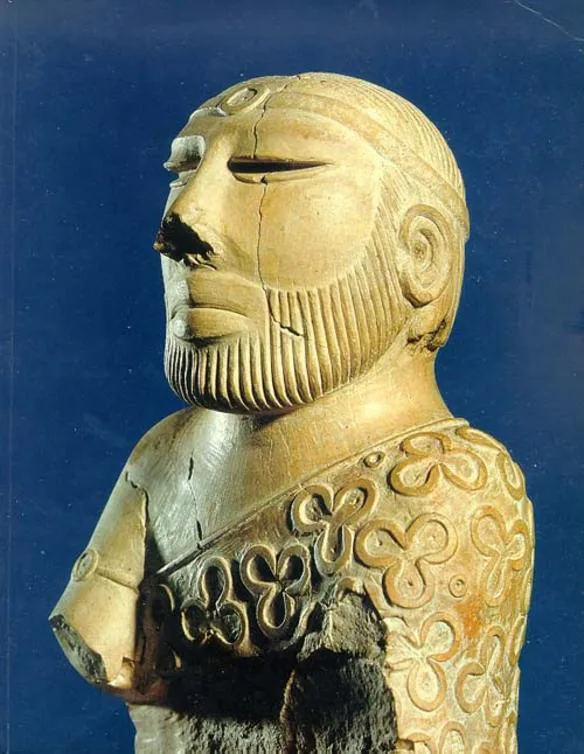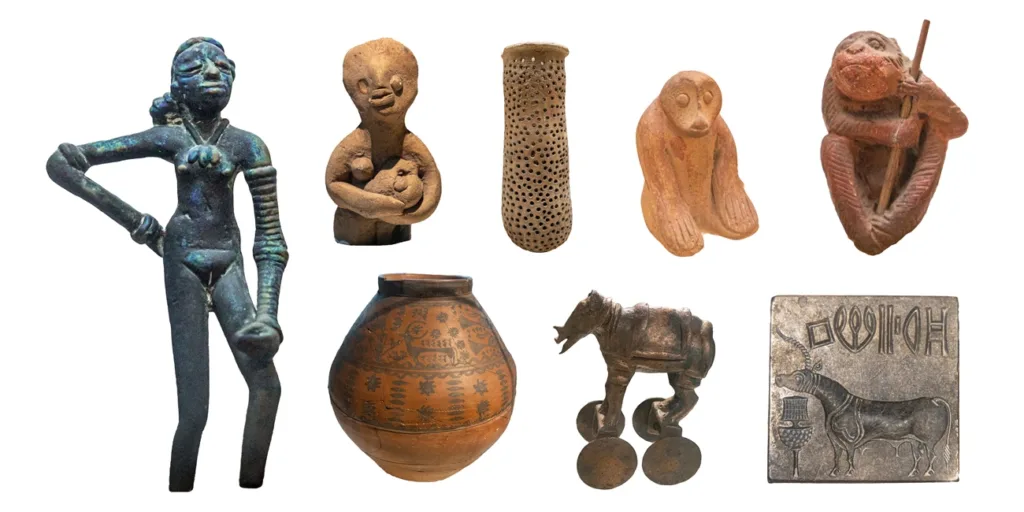
Plot/Storyline : Narration ( The Teacher can read out the following from a piece of paper )
Harappa, an ancient city full of wonders, had wide streets lined with houses made of special bricks and a clever drainage system that kept the city clean. People worked as farmers, craftsmen, and traders, coming together to create a bustling and thriving community.
Section 1
Life in Harappa — Exploring The local market through Tableaus :
Warm up : Discuss with students what they find in a local market today and what they think would be a harappa market. Ask the children to draw a sketch ( have it labeled ) in their notebook and then ask a few of them to volunteer and describe what they have drawn.
Activity : Tableau ( Drama Integration )
Make a rectangular box on the floor with a masking tape. Divide the children into different groups. Ask one group at a time to come inside the box and make a tableau of the local market that they can imagine. You can ask simple questions ( tap or touch the head of the child indicating that they can now answer the question ) as to who they are and what they are doing. ( The idea is only to get them started thinking and not arrive at any conclusion )
Section 2
Artifact Study — Exploring the primary sources as historians
Warm up : Discuss about the various jobs harappans would have had and what would have been their challenges
Activity : Teacher in Role ( Drama integration )
( Examples of Artifacts : Seals, Figurines, Pottery, Weights, Beads, Tools, jewelry etc)
Project any three different pictures of available artifacts amongst the groups and ask the children to answer the following questions in their notebook.
While each group presents its findings, the facilitator can ask questions while playing the role of a historian/archaeologist while the children can answer the questions and play the role of his/her juniors who found the artifact during the excavation.
The facilitator can wear a hat whenever he/she is assuming the role of the historian. The facilitator may go back and forth being a facilitator or a historian based on the conversation’s need.

( Observe and answer )
- What do you think it is ?
- What do you think it is made of ?
- How does the object feel to be in your hand ?
- What is the color of the object ?
- What is the shape of the object ?
( Imagine and answer )
- What do you think the object was used for?
- Who do you think would have used the object?
- What does the object tell us about the time period when it was made and used?
- Do we still this object today? If so, how is it different?
Section 3
Cityscapes — Exploring the architecture as experts
Activity : Teacher in Role and Mantle of Expert ( Drama Integration )
Divide the children into different groups and assume these groups are experts in their areas .Assign each group to research about a specific site( if possible, give printed pictures of that specific site) and ask them to present their findings based on the research questions ( ask them to read the relevant portions of the ncert textbook ).
While presenting their findings, the facilitator can ask questions and have a conversation by assuming the role of the lead town planner of the harappa city while the children being the experts.

Research Questions
- Who used this site
- What was taken into consideration while building this site
- Are there any present day examples of a similar site ? if so how are they different?
Examples of site(s) :
- Drainage system
- Dwelling Houses
- Roads
- Granaries
- Administrative buildings
- Fortification for defence
- Space for conducting Ceremonies
- Farm lands
NOTE
Drama in Education Conventions used
Tableaue : A representation of a dramatic scene by a person or group, posing silently without moving.
Teacher in Role ( TiR) : The teacher or facilitator assumes a role in relation to the pupils.
Mantle of Expert ( MoE) : Involves the creation of a fictional world where students assume the roles of experts in a designated field
Historical Thinking Framework used
Artifact Analysis : What do objects have to say about people and their culture, time, and place
Topics Covered ( Grade 6 / History / Earliest cities )
Understanding the socio-poiltico-ecconomic life during the Harappa civilization using artefacts and the town planning evedinces.
